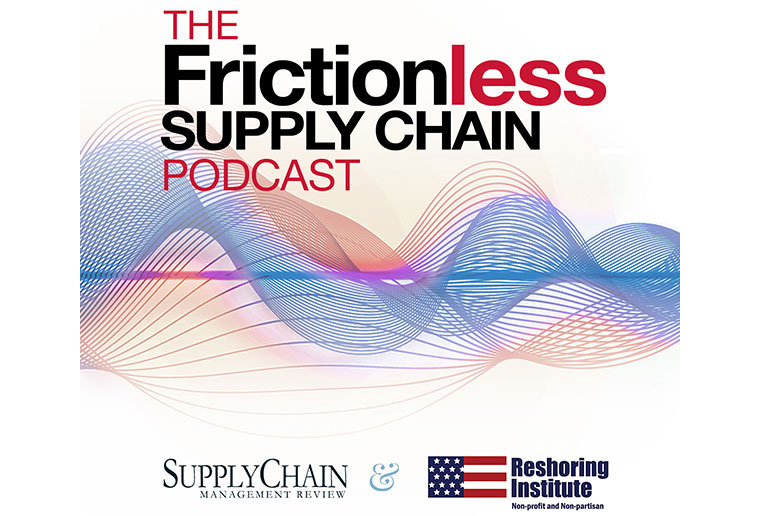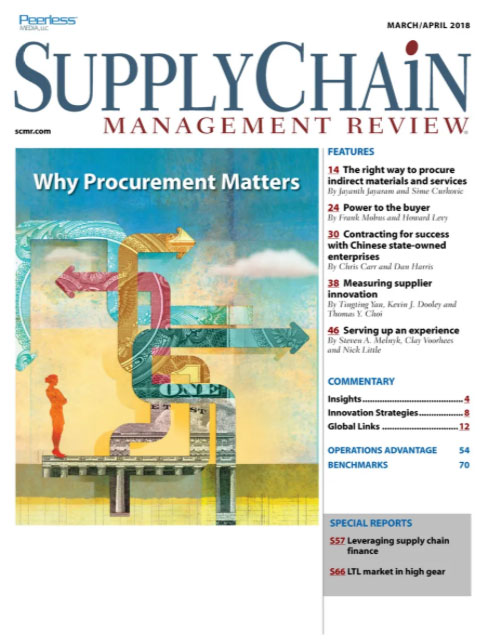Sorry, but your login has failed. Please recheck your login information and resubmit. If your subscription has expired, renew here.
March-April 2018
"Inflation creeps into U.S. Supply Chain.” So said the headline on a Wall Street Journal article I read this morning before writing this column. The Journal went on to write that U.S. companies are grappling with rising material and ingredient costs on top of pressure from higher wages—a potential double whammy— and noted that companies like Whirlpool and Ford have already issued warnings to the market. Browse this issue archive.Need Help? Contact customer service 847-559-7581 More options
At a forecasting conference I attended, a manager described a concert event at which Lady Gaga wore a unique nail polish that his company sold. Shortly thereafter, social media lit up and sales went through the roof. The company and its supply chain partners ran out of the product, as well as a key ingredient that went into making it. The company was ill-prepared to take full advantage of this rapid change in demand, likely losing significant revenue. To capitalize on this revenue opportunity, it should have had quick response forecasting (QRF)* and a quick response demand-supply team in place to garner more of the revenue from the sales boost. But, what exactly is QRF?
Big Data for tracking downstream demand signals is all the rage, driven by the belief that Big Data will garner better predictive signals than POS data, which has delivered limited predictability. However, the explosion of digital data and information on the Internet about how customers are using products has allowed forecasters and planners to begin to identify useful demand signals among Big Data’s noisy information deluge. Much like the social media flare up when Lada Gaga wore a unique nail polish that now everyone must have.
The issue for the above company was that its planning and execution processes were likely too routine and too slow to react to the sudden change in demand. For this type of change, sales and operations planning (S&OP) processes are typically:
- too slow to respond within planning cycles;
- reliant on monthly or weekly meetings and forecasts; and
- cannot source the requisite materials fast enough to meet significant unanticipated demand changes.

This complete article is available to subscribers only.
Log in now for full access or start your PLUS+ subscription for instant access.
SC
MR
Sorry, but your login has failed. Please recheck your login information and resubmit. If your subscription has expired, renew here.
March-April 2018
"Inflation creeps into U.S. Supply Chain.” So said the headline on a Wall Street Journal article I read this morning before writing this column. The Journal went on to write that U.S. companies are grappling… Browse this issue archive. Access your online digital edition. Download a PDF file of the March-April 2018 issue.At a forecasting conference I attended, a manager described a concert event at which Lady Gaga wore a unique nail polish that his company sold. Shortly thereafter, social media lit up and sales went through the roof. The company and its supply chain partners ran out of the product, as well as a key ingredient that went into making it. The company was ill-prepared to take full advantage of this rapid change in demand, likely losing significant revenue. To capitalize on this revenue opportunity, it should have had quick response forecasting (QRF)* and a quick response demand-supply team in place to garner more of the revenue from the sales boost. But, what exactly is QRF?
Big Data for tracking downstream demand signals is all the rage, driven by the belief that Big Data will garner better predictive signals than POS data, which has delivered limited predictability. However, the explosion of digital data and information on the Internet about how customers are using products has allowed forecasters and planners to begin to identify useful demand signals among Big Data's noisy information deluge. Much like the social media flare up when Lada Gaga wore a unique nail polish that now everyone must have.
The issue for the above company was that its planning and execution processes were likely too routine and too slow to react to the sudden change in demand. For this type of change, sales and operations planning (S&OP) processes are typically:
- too slow to respond within planning cycles;
- reliant on monthly or weekly meetings and forecasts; and
- cannot source the requisite materials fast enough to meet significant unanticipated demand changes.
 SUBSCRIBERS: Click here to download PDF of the full article.
SUBSCRIBERS: Click here to download PDF of the full article.
SC
MR


Latest Supply Chain News
- Tips for CIOs to overcome technology talent acquisition troubles
- There is still work to do to achieve supply chain stability
- Blooming success: The vital role of S&OE in nurturing global supply chains
- Supply chain salaries, job satisfaction on the rise
- How one small part held up shipments of thousands of autos
- More News
Latest Podcast

 Explore
Explore
Business Management News
- Tips for CIOs to overcome technology talent acquisition troubles
- There is still work to do to achieve supply chain stability
- Blooming success: The vital role of S&OE in nurturing global supply chains
- Supply chain salaries, job satisfaction on the rise
- How one small part held up shipments of thousands of autos
- Investor expectations influencing supply chain decision-making
- More Business Management
Latest Business Management Resources

Subscribe

Supply Chain Management Review delivers the best industry content.

Editors’ Picks





